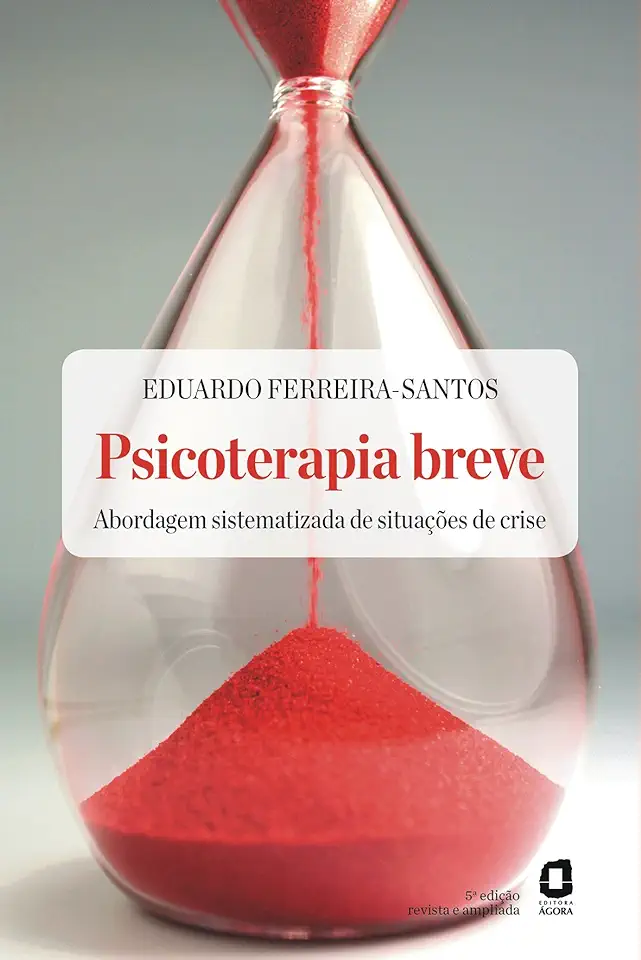
Brief Psychotherapy - Eduardo Ferreira Santos
Brief Psychotherapy: A Comprehensive Guide to Theory and Practice
Introduction
In today's fast-paced world, where time is a precious commodity, brief psychotherapy has emerged as a highly effective and efficient approach to mental health treatment. This comprehensive guide, authored by renowned psychotherapist Eduardo Ferreira Santos, provides a thorough exploration of the theory and practice of brief psychotherapy, empowering mental health professionals to deliver transformative care within a limited timeframe.
Key Features of Brief Psychotherapy
Brief psychotherapy offers several advantages over traditional long-term therapy, making it an attractive option for both therapists and clients. Some of its key features include:
Time-effectiveness: Brief psychotherapy typically involves a shorter duration of treatment, often ranging from a few sessions to a few months, allowing clients to experience significant improvements in a relatively short period.
Cost-effectiveness: With a reduced number of sessions, brief psychotherapy is often more affordable than long-term therapy, making it accessible to a wider range of individuals.
Flexibility: Brief psychotherapy can be tailored to meet the specific needs and preferences of each client, allowing therapists to adapt their approach based on the client's progress and circumstances.
Evidence-based: Brief psychotherapy is supported by a wealth of research demonstrating its effectiveness in treating a wide range of mental health conditions, including anxiety, depression, phobias, and relationship issues.
Theoretical Foundations
Brief psychotherapy draws upon various theoretical orientations, each offering a unique lens through which to understand and address psychological distress. Some of the prominent theoretical foundations include:
Cognitive-behavioral therapy (CBT): CBT focuses on the relationship between thoughts, emotions, and behaviors, helping clients identify and modify maladaptive patterns that contribute to their difficulties.
Solution-focused therapy (SFT): SFT emphasizes the client's strengths and resources, guiding them to develop solutions to their problems rather than dwelling on the past or analyzing the root causes of their distress.
Narrative therapy: Narrative therapy views individuals as the authors of their own lives, empowering them to rewrite their personal narratives and create more fulfilling stories.
Emotionally focused therapy (EFT): EFT focuses on the emotional experiences and attachment patterns that underlie relationship difficulties, helping couples develop secure and fulfilling connections.
Practical Techniques and Interventions
Brief psychotherapy encompasses a diverse range of techniques and interventions designed to facilitate rapid and lasting change. Some of the commonly used techniques include:
Goal setting: Therapists collaborate with clients to establish clear and achievable goals for therapy, providing a roadmap for the therapeutic process.
Problem-solving: Clients are guided through a structured process of identifying problems, generating solutions, and implementing strategies to overcome challenges.
Cognitive restructuring: Therapists help clients challenge and modify negative thought patterns that contribute to their distress, promoting a more positive and adaptive mindset.
Behavioral activation: Clients are encouraged to engage in activities that bring them pleasure and a sense of accomplishment, gradually increasing their involvement in meaningful and rewarding experiences.
Emotion regulation: Therapists teach clients skills to manage their emotions effectively, reducing the intensity and impact of negative emotional states.
Applications in Different Settings
Brief psychotherapy is versatile and can be effectively applied in various settings, including:
Clinical practice: Brief psychotherapy is widely used in outpatient clinics, private practice, and community mental health centers, providing accessible and timely support to individuals seeking mental health treatment.
Healthcare settings: Brief psychotherapy can be integrated into primary care settings, allowing healthcare professionals to address mental health concerns alongside physical health issues.
Employee assistance programs (EAPs): Brief psychotherapy can be offered as part of EAPs, supporting employees in managing work-related stress, anxiety, and other mental health challenges.
School counseling: Brief psychotherapy can be provided in school settings to address the mental health needs of students, promoting emotional well-being and academic success.
Conclusion
Brief Psychotherapy: A Comprehensive Guide to Theory and Practice is an invaluable resource for mental health professionals seeking to expand their knowledge and skills in brief psychotherapy. With its comprehensive coverage of theoretical foundations, practical techniques, and diverse applications, this book empowers therapists to deliver effective and efficient care, helping clients achieve positive and lasting change in their lives.
Enjoyed the summary? Discover all the details and take your reading to the next level — [click here to view the book on Amazon!]